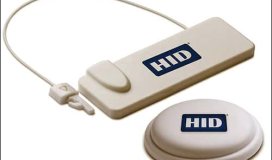Department store chain Bon-Ton Stores may investigate new ways to roll out radio frequency identification for merchandise visibility, after proving gains in display compliance and sales at its 180 stores' shoes and luggage departments. Throughout the past two years, the company has been deploying the technology to track whether the shoes and luggage it had on sale were available on display.
The system launched in 2014 as a three-store pilot for display shoes, then expanded to other locations in 2015, and then to the luggage department last year. Bon-Ton is now investigating other applications to track some high-value products in other departments. The solution, known as Inventory Management, is provided by Zebra Technologies. It consists of handheld MC3190-Z RFID readers, as well as UHF RFID tags, managed by Bon-Ton Stores' own software.
Bon-Ton Stores operates Bon-Ton, Bergner's, Boston Store, Carson's, Elder-Beerman, Herberger's and Younkers stores. The company says that since it began tracking display merchandise in shoes and luggage, it has nearly eliminated what had been up to a 20 percent non-compliance rate during an average selling week. Each product missing from display is potentially a missed sale, says Lisa Celebre, Bon-Ton's store operations VP.
Traditionally, sales associates at each store would manually review what samples were on display in the shoe department on a daily basis, in order to ensure that all shoes sold were represented in that display. This was a time-consuming process, however, that was prone to errors. In seeking a technology-based system, Celebre says, the company wanted greater efficiency and accuracy of these display-compliance checks.
In the shoe department, a single shoe is displayed for each type of footwear—brand and style—that is offered. In 2015, the firm began piloting RFID technology. First, at three stores, it opted to attach a UHF RFID tag from one of multiple tag providers to each sample shoe, then linked each tag's unique ID number to the stock-keeping unit (SKU) information in the retailer's management software, explains Tom Moore, Zebra's industry lead for retail and hospitality. After piloting the technology for several months, the retailer expanded the deployment to 25 stores and then 180 during the course of 2016 and early 2017.
Each day, two associates use the MC3190-Z readers, each starting on opposite ends of the department display and working their way from that end to the other. The handheld device captures the ID numbers and forwards them to the software, which links them to the related data. By dedicating two staff members to the task, the store can have redundancy to ensure that no tags are missed.
Once both tag read events are finished, sales personnel can then access the software, view the list of display items and notice any discrepancies, such as a missing shoe. Typically, they print the results so that the associates can carry the printed details with them as they go about finding missing samples. If the missing shoe cannot be found, they can enter the back room, acquire another sample shoe for that brand and style, apply an RFID tag and upload it into the system.
The data is available not only to store associates or management, but also to corporate employees in the centralized office. This enables them to view, on a daily basis, when display items are not on hand, and thus address the problems accordingly, Celebre explains.
"The results are very enlightening," Celebre says. "You think you're doing a thorough job with the manual process, but the automated system helps [users to] understand where that might not be the case." Some products may be removed from the display to be purchased, or they could erroneously be returned to the back room or shelved incorrectly. While sales associates initially had doubts about the technology's efficacy, she says, they were happy to find a tool to more quickly and accurately check the display inventory.
Following a three-store pilot of the shoe department, the company opted to launch the technology at 180 stores, and to expand the system's use to the luggage department. Luggage is another challenge for display compliance management, Celebre says. Often, a piece of luggage on display may be sold, and its absence means no more of that brand or style may be sold until another display version is replenished. "We felt highly confidence from what we had learned from the shoe department," shs tates, that the technology would provide the necessary benefits. The company has measured sales with the RFID system against those from before the technology was implemented, and found a boost. However she does not indicate how much that improvement was.
The sales boost, Celebre notes, is only one measurement for the technology's benefits. "What was unexpected was the customer reaction," she says. Although shoppers did not know any specific change (such as the RFID system's installation) had taken place, customers in the related store departments reported that they noticed an improvement in displayed product volumes. Sales associates, in the meantime, indicated a reduction in their workload.
More info visit rfidjournal.com



